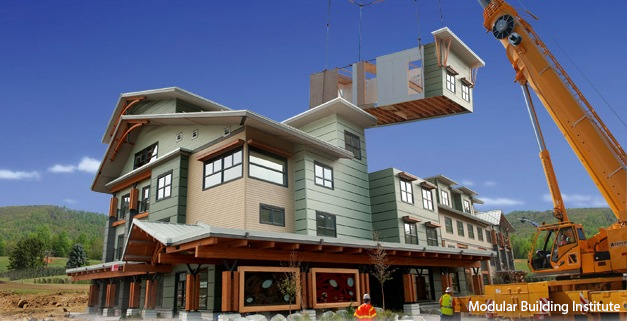
While our designs allow flexibility of construction approach so we can pivot based on project needs and market conditions, we believe that factory-built housing will be essential to improving the US housing crisis. While modular construction still comprises only a small percentage of domestic residential construction, it is widely adopted worldwide, and modular’s US market share is expected to skyrocket in the next five years.
Key advantages include:
- Speed
- Sustainability
- Cost
- Reliability
- Quality
- Solving Labor Supply Constraints
Modular building is a construction process in which a building is constructed away from the permanent site, at a plant under controlled conditions. Using the same codes, standards and materials of an onsite “stick-built” structure, modular building has many tremendous benefits over the standard building methods. The modular process will break down a building design into modules that are small enough to be transported to the building site and combined with other modules to create the exact design and specifications intended.
The benefits of building modularly versus onsite builds are endless.
Timeliness of Completion: Due to the ability to construct buildings simultaneous to the dirt and foundation work, and the avoidance of weather delays, building modularly can take up to 50% less time than any standard build.
Higher Quality: Within a controlled environment, the build crew is able to standardize processes thus creating a much higher level of consistency of production and product. This environment also allows for the use of technology that just isn’t available to onsite builds.
Safer and More Productive Build Process: With the construction crew working in a controlled environment, productivity is improved and there are fewer workplace safety issues due to consistent and improved working conditions.
Significant Cost Savings: When the predictability and timeline of the project is not influenced by weather, theft, labor inefficiencies or management redundancies – the total build time is reduced, thus decreasing all costs associated with the build.
Less Environmental Impact: Through all of the benefits described above, the modular building process naturally reduces material waste, increases energy efficiencies, creates a longer lasting product, and minimizes the disruption to the build site.
The building standards and expectations associated with any modularly built product can be higher than that of most “stick built” structures. Because each module is designed to stand independent of the others and to withstand the rigors of transportation, the result is a stronger collective structure once the modules are joined and integrated. With early adoption of the modular build, developers and architects are all able to have even their highest expectations met and exceeded.
